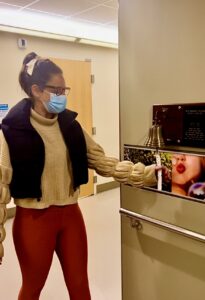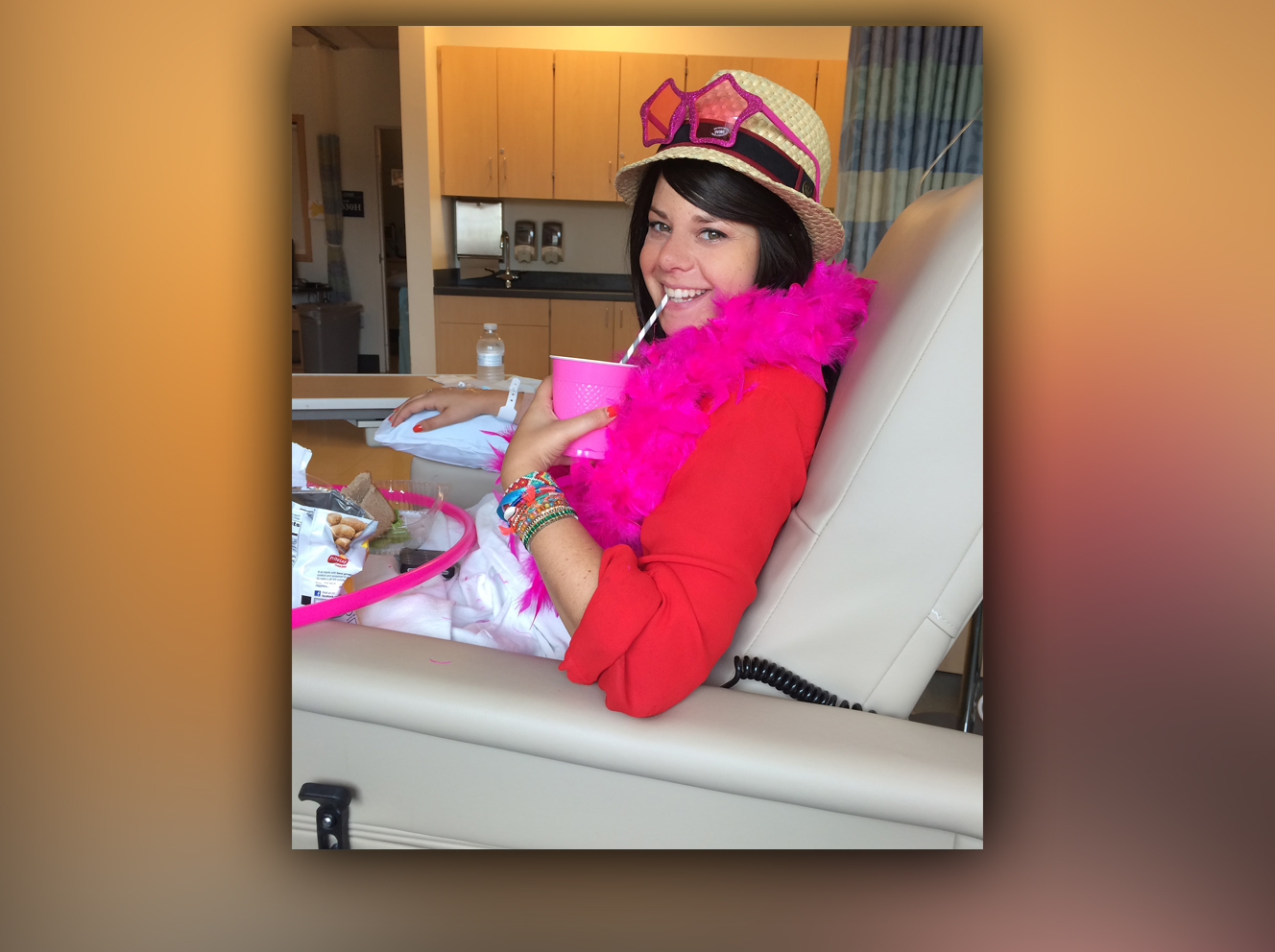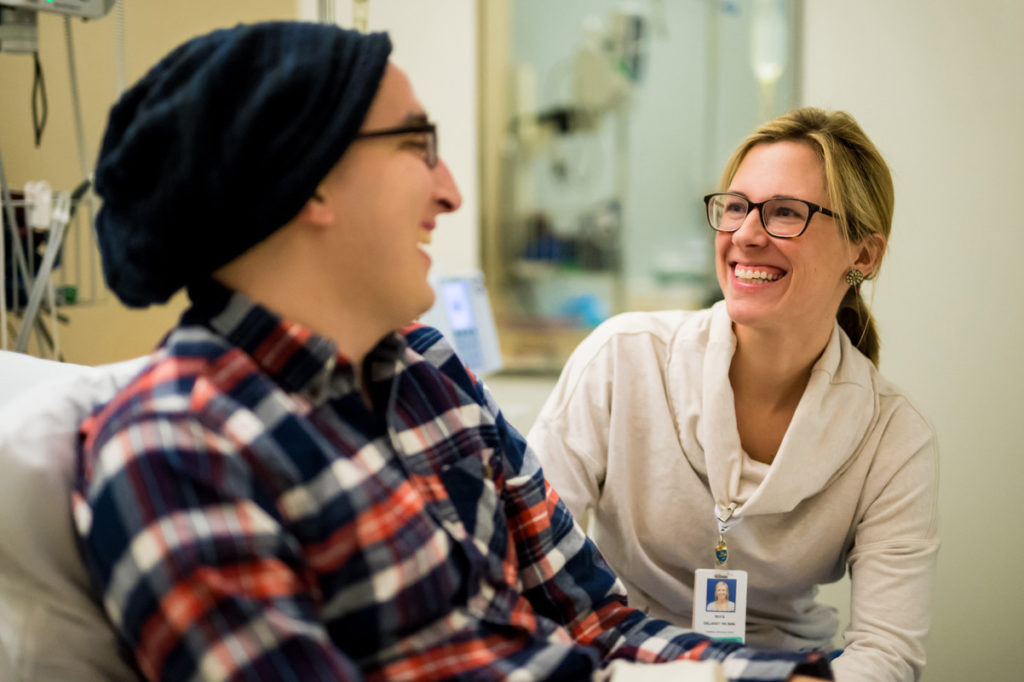Alyssa Rotman has battled five different life-threatening diagnoses over the past two decades — her entire adulthood. She fought cancer while studying architecture as a student at Syracuse University, and the hundreds of hours she spent in hospitals — becoming all too familiar with what works and what doesn’t when it comes to hospital design — led her to pursue a career designing healthcare spaces.
Now, as an architect at global architecture firm NBBJ Design, she is applying her one-of-a-kind set of skills and experiences to design Massachusetts General Hospital’s new Phillip and Susan Ragon Building, being constructed to house the Corrigan Minehan Heart Center and Mass General Cancer Center — the same cancer center where she has received care for more than 20 years. When the Ragon Building opens its doors, Alyssa will continue her fight against cancer in the spaces she designed, informed by her own experience as a patient.
A Decades-Long Cancer Journey
When Alyssa was only 18 years old, her pediatrician found a lump on her thyroid that developed into cancer. That’s when she and her family turned to Mass General for treatment, and her relationship with the Cancer Center began. That same year, she was diagnosed with familial adenomatous polyposis (FAP) — a rare, inherited condition that leads to colon cancer. More than a decade later, she was diagnosed with breast cancer, and then pancreatic neuroendocrine cancer. Through it all, Alyssa managed to build an incredibly successful career as an architect designing healthcare spaces, her previous project being the Brigham and Women’s Hospital Emergency Department renovation and expansion.
In her 20 years as a cancer patient, Alyssa has accessed nearly every service available at Mass General, from oncology, surgery and gastrointestinal care, to nutrition, acupuncture, mental health support and pain management. She has attended patient support groups at Mass General Cancer Center. She has taken yoga classes and gotten massages. She has learned how to use makeup to cover hair loss. And all have helped her manage her diagnoses, treatment protocols, surgeries and side effects.
“I can walk the halls of Mass General with my eyes closed,” she says. “As hard as it’s been, I can honestly say that I am grateful for how cancer has shaped me, from my career to my personality. I have no doubt it has played a major role in my personal strength, empathy, positivity, perspective and zest for life. I am grateful every day to be where I am on this journey.”
A New Perspective
It was her experience as a cancer patient that led Alyssa to healthcare architecture, and it is also what makes her so uniquely qualified to serve as part of the Phillip and Susan Ragon Building design team. Not only can she draw on her own experiences and those of her family in her designs, but her close relationships with her care teams have given her insight into the caregiver perspective.
“As a patient with a healthcare design career, my own care team feels comfortable sharing what they need in a space with me — once even describing something they’d like improved as I was going under anesthesia,” she says. “It’s a unique situation, where these folks I’ve known for years don’t feel like they have to be on their ‘best behavior’ when talking about hospital design with me, and I take all of that unfiltered feedback with me into my work.”

For the Ragon Building project, NBBJ challenged her to design more than inpatient rooms. To design the “behind the scenes” spaces in the Ragon Building, she has partnered with teams across the hospital — including environmental services, pharmacy, supportive care services, and nutrition and food services — to learn about all that goes into providing patient care.
“I’ve worked with my physician, nurse and caregiver partners on this project to answer the question, ‘uninhibited, what is your dream scenario?’ when it comes to workspace,” Alyssa says. “We’ve looked at existing processes and identified when current procedures are impacted by spatial constraints, and how we can improve things so that each team can operate in a way that is truly best for them.”
Channeling Gratitude and Paying it Forward
Alyssa describes being treated for cancer during the peak of the COVID-19 pandemic as one of the most harrowing experiences of her life. She remains inspired by the complete selflessness her care team displayed during that time in their efforts to keep her as safe and healthy as possible. Now, she is channeling that gratitude into ensuring the utmost staff safety and comfort in the new building.
“My mind is constantly running through all of my different patient experiences across so many areas, to ensure that my designs work for all of the people that will interact with a space — for all different kinds of patients, family members, nurses, physicians, everyone. There’s so much we can do in our architectural design to make everyone feel comfortable and at ease, from the color of the walls to the width of the hallways, to the location of the waiting rooms and bathrooms.”
Alyssa’s decades spent in and out of healthcare settings seep into every aspect of her work — even something as small as considering family members, like her father, who feel squeamish around needles — and incorporating into her designs a space outside of exam rooms for folks to wait while their loved one is having an IV inserted or blood drawn.
“I’m so proud of the work we’ve done on this project, knowing firsthand how enormous an impact our efforts will have on the folks working and receiving care in this building. So much careful consideration went into every detail of the design, and that’s because everyone involved in this project truly cares about how it will affect patients, families and staff alike,” Alyssa says.
“These carefully considered design details are ones I know personally will contribute to a warm, healing, supportive, inclusive and revolutionary space at Mass General,” she continues. “I don’t know of any other spaces that exist like this building — it is truly the future of healthcare. As I continue my cancer journey, I eagerly await my first walk through the Ragon Building, to see and feel it for myself.”
To learn more about how you can support the Philip and Susan Ragon Building, contact us.
To support Mass General Cancer Center, click here.


